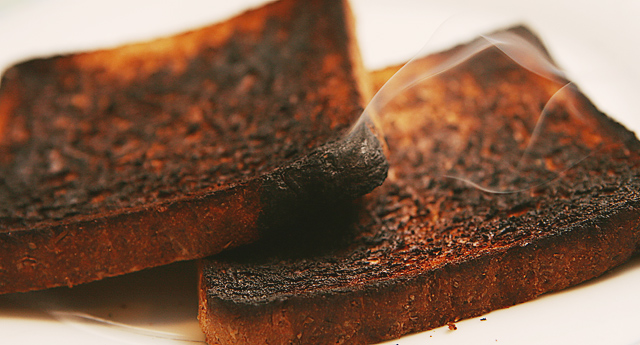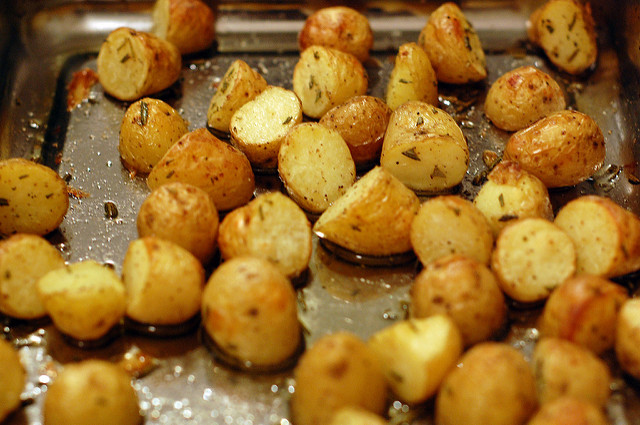Even if you’re not one of those people who enjoys flame-balling their s’mores, carcinogens are found in a variety of foods and may be putting your health at risk. That’s not to say you have to stop eating your favorite foods — but a question of how much is too much and how you can be cautious of what you’re consuming.
First and foremost, before jumping into things, a key term to know is “acrylamide”. It’s the chemical that makes eating burnt food a possible risk. Produced by heating foods rich in carbs and starch, acrylamide is not only a carcinogen, but also a neurotoxin, and can cause nerve damage.

Gif courtesy of giphy.com
In 2007, according to a BBC news article, Dutch scientists conducted a study that suggested women that consumed acrylamides were at higher risk of getting ovarian and womb cancer. People that eat just 40 micrograms of acrylamide a day – think one serving of chips — could be doubling their chances of getting these cancers, as compared to people who don’t consume as much of it.
However, the same researchers also noted the possibility of other risk factors, because chances are extremely high that acrylamide is not the single cause for any of these cancers.

Photo courtesy of Linkedin.com
One everyday food to be wary of is burnt toast. Now, I love burnt toast and I’m one of those people who will only scrape off the black if absolutely necessary. But, every time you eat that char, you are most likely putting more acrylamide in your body.
Acrylamide is mainly found in high starch foods and is produced when carbohydrates and sugars are heated together. Because of this, it’s possible that white breads have higher amounts of acrylamide, when heated, than other breads – another reason you should be adding more wheat and whole grains to your diet.

Photo courtesy of @Su-Lin on flickr.com
There are certainly ways to limit your exposure to acrylamide, though it’s very hard to get rid of completely. This goes without saying, but pay attention to the amount of time your food spends heating up and be careful not to overcook your meals. When cooking potatoes or other starchy vegetables, cook to a light yellow. If you’re working on something else while you cook and think you might forget to check your foods’ progress, cook on a lower flame for longer time.


